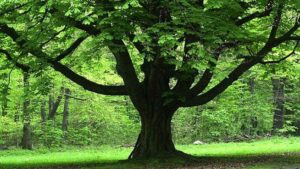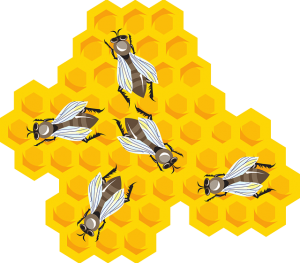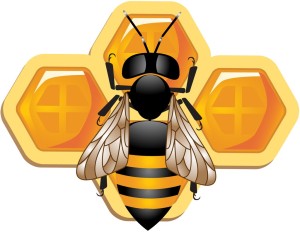When is it OK to Cut Down a Healthy Tree (and not feel guilty)?
 It’s not always so popular among tree lovers, but sometimes even perfectly healthy trees need to be removed. The reasons are varied; sometimes from necessity and others out of preference but come down, they do – so best be informed beforehand.
It’s not always so popular among tree lovers, but sometimes even perfectly healthy trees need to be removed. The reasons are varied; sometimes from necessity and others out of preference but come down, they do – so best be informed beforehand.
Which leads to this: before you make that decision to cut down a healthy tree, please contact a tree care professional to get the straight scoop. They’ll advise if it’s truly necessary to take down the entire tree or if a limb removal is a better option. They’ll advise you on the physical impact of other trees in the area or simply help you come to a decision you won’t later regret. A good tree care professional doesn’t judge; he/she understands that yes, sometimes even good trees must go.
Construction – keeping up with the Jones’s
You’re building new, adding on, laying a patio, an electronic underground dog fence, utility or water lines, sprinkler systems or putting in a deck or pool. All these may affect your trees depending on the proximity. Your contractor may be the kind of person who says, “off with its head!”, if they even think it will inhibit their ability to get the job done.
Or conversely, you may be told the tree is good to stay, only to learn later the utility contractors cut the primary roots in an effort to lay their lines. You won’t even know it happened until one, two or three years later when that beautiful tree you took the extra effort to keep is beyond saving. Cutting down an existing tree will change the exposure of those left standing. Where there was once shade and shield, there may now be sun and wind; all elements that can severely impact a trees ability to survive. Yes, trees do get sunburned!
That is why you don’t let your obstetrician advise you on open heart surgery or your contractor advise you on trees. You speak with the professionals who do the job for a living. A good tree care professional will have no problem letting you know what is outside of their scope. They will want to point to the right professional for the situation.
Aesthetics: Beauty and the wondrous symmetry of Yin/ Yang
Perhaps the type of tree is unappealing. Maybe it’s old, failing and has been ill pruned too often by amateurs and will never be the vision of youth it once was. Perhaps you don’t like its proportion in proximity to buildings or other trees. It could be the placement is, in fact, crowding its’ roots which will eventually cause the tree or other surrounding trees to die.
Politics: The art keeping your neighbors happy
Maybe you love the tree but your neighborhood association doesn’t. Perhaps your next-door neighbor is really spooked by your weeping willow branches clawing like the hand of the Hunchback of Notre’ Dame at her window in the middle of the night (This actually happened with my next-door neighbor when I was a child. The poor woman deserves some sleep for cripes sake, doesn’t she?)
Do a web search on “Trees and Neighbors” and you’ll find it’s a common complaint. In general, your tree is your responsibility and if others property or person are harmed by your negligence to properly care for your tree, it’s on you. That said, your neighbor has the right to hack off any portion of your tree that overhangs and is harming their property as long as it doesn’t irreparably harm your tree. So, use the Golden Rule; before you make that first cut on the limb over your yard, call the owner and talk. Make nice and the universe will be good to you.
Yard keeping: Trees that make us work
Sometimes trees are just plain “messy”. Among those that have earned the distinct pleasure of making the “Top Ten Worst Trees to Plant” are the mulberry, sweet gum, mimosa and cottonwood. The sweet gum also made the “Five Worst Trees for the Lazy Landscaper”, along with the catalpa (which made #1 on that list), the magnolia, and a few other trees. The list of messy trees is long. Even the most fetching trees with enticing flowers can wreak havoc on a weekend you planned to relax.
Ouch: Trees that hurt other living things
Do a search on the internet and you’ll find headlines such as “Black Walnut: The Killer Tree”, or “Growing the Poisonous Castor Bean”. They may sound a little melodramatic but the facts are that Jungone, the poison emitted from one black walnut tree can wipe out an entire garden if you haven’t done your homework to find plants that are Jungone resistant.
My neighbor has several and I’m constantly searching for plants that can survive its ravages. And the castor bean plant? According to Cornell University’s College of Agriculture and Life Science, “It is said that just one bean can kill a child”. The good news is that “If death does not occur in 3-5 days, the victim usually recovers.” Does that headline sound too melodramatic now?
Sometimes the lines are clear and easy to conclude but sometimes doing the “right” thing is just not so cut and dried. Does the end justify the means or vice-versa? It’s not worth divorce court or a neighborhood war. Compromise is your best bet so keep the tree when possible, remove or trim as appropriate and let peace reign. If that doesn’t work, you may just have to bite the bullet and let the criticism fly where it may.
Click here to download a PDF of Species of Trees in Kansas City.

 ported here from Europe in the 1800s. Maybe they were stressed since captured for various use by Egyptians. After all, they’ve been introduced into alien environments for centuries. Most species adapt over time, but an environment that changes too quickly becomes hostile. The Honeybee decline is steady and rapid both here and around the globe since the late 1990s.
ported here from Europe in the 1800s. Maybe they were stressed since captured for various use by Egyptians. After all, they’ve been introduced into alien environments for centuries. Most species adapt over time, but an environment that changes too quickly becomes hostile. The Honeybee decline is steady and rapid both here and around the globe since the late 1990s.  So, honeybees are at least safe, for now, from this one chemical solution that is our only hope at present to save our Ash trees.
So, honeybees are at least safe, for now, from this one chemical solution that is our only hope at present to save our Ash trees.